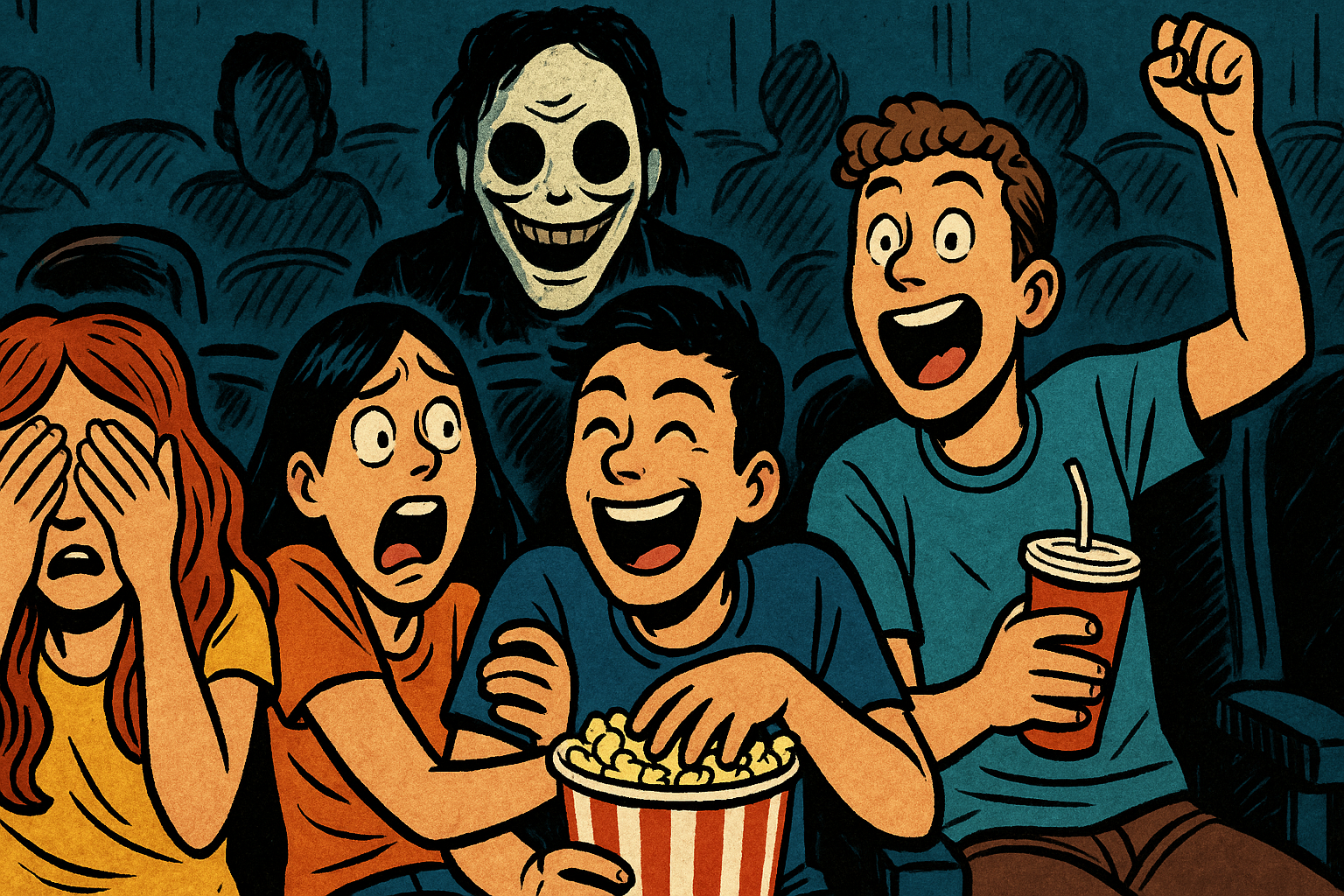Horror Hooks …
written by
jaron summers (c) 2025
For decades, horror was the black sheep of cinema—cheap thrills, cheap screams, and usually a guy in a rubber mask chasing teenagers.
Now teenagers are running toward the theaters, not away from them.
From Smile to Hereditary to The Conjuring Universe, horror has become one of the fastest-growing film genres—and younger audiences, especially Gen Z and Millennials, are leading the charge.
The Thrill of Safe Fear
Ask a neuroscientist why young people love horror and you’ll get a biochemical answer. Watching a slasher or paranormal flick jolts the amygdala, the part of the brain that processes fear. That, in turn, releases a cocktail of adrenaline, serotonin, and dopamine. The result? A natural high.
Unlike real-world fear—say, a late-night walk in a dark alley—movie fear is controlled. You get the jump scares and the sweaty palms, but the lights come up and you’re safe.
That balance between danger and safety is what researchers call the “Goldilocks principle of fear”: not too little, not too much, just right.
Horror as a Social Sport
Movies are never just about the movie. They’re about the people you see them with. Young audiences in particular treat horror as a group event. You watch together, scream together, and then laugh together.
Sharing a horror film on a Friday night is a bonding ritual. And let’s be honest—holding someone’s hand during A Quiet Place is a lot easier to justify than trying it during a rom-com.
The Season of Fear
Horror has long spiked around Halloween, but streaming platforms have turned it into a year-round feast. Gen Z and Millennials are binging horror titles at higher rates than older groups, according to surveys. Nearly half of Gen Z reported seeing a horror film in theaters within six months, compared with far fewer Baby Boomers.
October no longer has a monopoly on fear. Netflix drops fresh horror every month, and TikTok spreads it like wildfire with reaction videos, scream montages, and “try not to jump” challenges.
Real-World Anxieties
Here’s a theory film scholars love: horror works because it reflects cultural fears. For young people navigating climate change, political chaos, pandemics, and economic stress, horror films act like a funhouse mirror.
Whether it’s zombies standing in for consumer culture, haunted houses representing broken families, or analog horror exploring the dangers of tech, these films let audiences confront anxieties in exaggerated but oddly relatable form. You can’t defeat inflation, but you can cheer when the monster gets torched.
Psychology of Curiosity
Research also shows that sensation-seeking and morbid curiosity peak in younger years.
That may explain why 20-year-olds are more willing than their parents to buy tickets for Evil Dead Rise. For many, watching horror is training wheels for adult emotions—facing fear, death, and uncertainty without actually risking harm.
And yes, some are just in it for the gore. But even gore can be educational—it teaches you when to look away, and when not to order spaghetti afterward.
Box Office Juggernaut
It’s not just audiences—Hollywood is paying attention. Horror’s market share in cinema has doubled over the past decade, climbing from about 5% in 2013 to over 10% in 2023.
That makes it one of the most profitable genres, thanks to low budgets and strong returns.
Studios are finally realizing what teenagers knew all along: scaring people sells.
Closing Scare
So why are young people flocking to horror films? Because they’re thrilling, social, affordable, and—oddly enough—comforting. They let you face your fears in ninety minutes, usually with popcorn, and always with the guarantee that you’ll get to walk out alive.
Horror may once have been dismissed as niche, but for Gen Z, it’s becoming the new mainstream. If you’re still avoiding it, don’t be surprised when your kids drag you to the next supernatural blockbuster.
Cover your eyes when they don’t.
